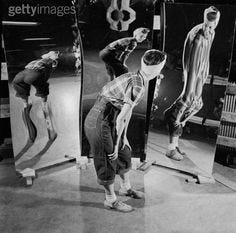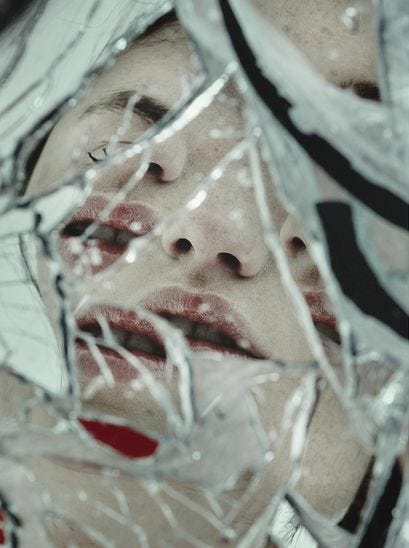Balancing Attachment & Authenticity
Or: is RuPaul right "if you can't love yourself, how can you love someone else?"
My favourite psychiatrist, Dr. Gabor Mate, often discusses how we are constantly choosing between attachment and authenticity. As attachment-based beings (we require caregivers to survive, we aren't baby turtles and can't find our own way to the sea), we choose attachment because we have to. We fundamentally require relationships to survive.
As attachment-based beings, acceptance is a basic need. As we develop our sense of self, we naturally rely on external validation to shape our identity. Of course we do! We are informed by our earliest and closest relationships who we are - that’s the purpose of upbringing. As we grow, the external validation is meant to be tempered with Inner Knowing - they should inspire us to turn towards ourselves. Parents who ask “what do you think?” or “how does that feel?” or “are you full?” are teaching the balance of inner knowing.
Ideally, our early relationships should offer the first glimpse of our true self through mirroring - as we gaze into the eyes of our primary attachments, we *should see our Selves. It is through our relationships where we first come to know ourselves, for I have never seen my own face - I have only ever seen my reflection. As our relationships reflect ourselves back to us, depending on the mirroring we receive, a distorted self-perception can emerge. The mirrors we look into to see ourselves aren’t perfect - they can be flawed and cracked so how we see ourselves is too
If the mirror is warped, we can externalize our identity - relying on others to define us, rather than inform who we are. This is the difference between asking for support or guidance in making a decision and wanting someone else to tell you what to do - the latter is an externalization. The impact of externalization is insecurity, in a literal sense.
When we are mirrored accurately, we have what’s known as “secure” attachment - we can trust our needs will be met by people who love and support us. Insecure attachment is the opposite - I cannot ask for my needs. I cannot expect to have my needs met. With insecure attachment, when the mirror is warped, I see myself inaccurately, through the projections and perceptions of someone else’s wounding. This usually means I apologize. A lot. Overapologizing is usually an overcompensation of an internalized feeling that your existence is a burden.
If the mirror is fractured, so too is our sense of self. Our Inner Knowing is supplanted by External Seeking. We reach outside of ourselves trying to fix cracks in the mirror - but the cracks are not our own. They do not belong to us. These are the scars of the mirror, not of yourself. External Seeking is any way we try to meet our identity needs that are external - this can be through an obsession with appearance, escapism, mindlessness, relationships. The key is the obsession because it is trying to take the place of something internal. But your inner world cannot be replaced with external effigies - they are a mockery of the true complexity and marvel of your inner landscape.
We choose attachment again and again, pushing aside our authenticity because our need for acceptance is so strong. And, yes, our need for acceptance IS a need - it isn't pathological or something we can / should get rid of. Our need for acceptance is part of what makes us human. Our intention is to find balance between attachment and authenticity so we aren't abandoning ourselves in order to have acceptance - acceptance at the expense of our self-betrayal isn't acceptance, anyway.
So we choose attachment again and again until we can't not choose authenticity - until it becomes too painful, too incongruent, too exhausting to not choose our Selves. It's when we discover the never-fulfilled promise of conditional love, conditional acceptance, that we can choose authenticity. It isn't until we start to heal our attachment wounds that we can truly choose authenticity.
“There is no growth without real feeling. Children not loved for who they are do not learn how to love themselves. Their growth is an exercise in pleasing others, not in expanding through experience. As adults, they must learn to nurture their own lost child. It takes great courage to break with one's past history and stand alone”
-Marion Woodman
Choosing authenticity means releasing persona, people-pleasing, performance, perfectionism and the other coping strategies that keep our authenticity at bay. These coping strategies have also kept us safe so in their release, we have so much gratitude for how they have protected you. These coping strategies have kept you safe for a long time and it doesn’t (or shouldn’t) happen overnight.
This process of letting go doesn’t mean you’re letting go of relationships - it is letting go of externalizing your identity. It becomes an invitation to internalize your identity, to define and become yourself. We need relationships to survive and we are first formed by our relationships. But we can let go of the ways we’ve learned to survive. We can do this in the Marie Kondo way - with gratitude. We let go of the ways we’ve lived before with gratitude knowing they served us for a purpose for their time.
Finally, this brings us to RuPaul’s famous question: if you can’t love yourself, how can you love someone else? This is partially true - love for others, if not matched at least in part with self-love, can easily become External Seeking. But we learn to love through relationships - we learn to love ourselves through relationships, we learn who we are through relationships. The question I would like to get an amen to is “how can I learn to love myself?”
The answer to that question is slightly rhetorical. To continue the analogy of mirroring, we were never meant to see our own face. We were always meant to see our reflection. And not a crisp mirrored reflection, but a watery, rippled reflection in the misty eyes of our mother, in the stillness of the pond and the rushing of the river. Our reflection was meant to be marked by the element of emotion - water.
But we see ourselves clearer now than we ever have before. Perhaps more than we were ever meant to. We see ourselves in countless mirrors, in the dreaded front-facing camera, in endless selfies never to see the light of day. And somewhat ironically, in the clear-seeing of our reflection, we have an equally distorted sense of our Selves. We, perhaps, see ourselves too clearly, like the absurdity that comes from writing the same word again and again. Perhaps there was meant to be at least a little bit of mystery in our mirroring to inspire us to turn our vital energy within, and journey to discover our center. Perhaps it was the unknown of the watery reflection that began the curiosity of the Inner Knowing.
So consider how you have been mirrored - how you have come to know yourself. Consider if the mirrors in which you have perceived yourself have been accurate - or if you have built your identity upon carnival fun-house warped reflections, or shards of belittled projections, cracked at the edges. Consider how you can turn towards yourself, to focus on beginning to trust your Inner Knowing, and how you can see your reflection in imperfect ripples of an endless lake of love.





